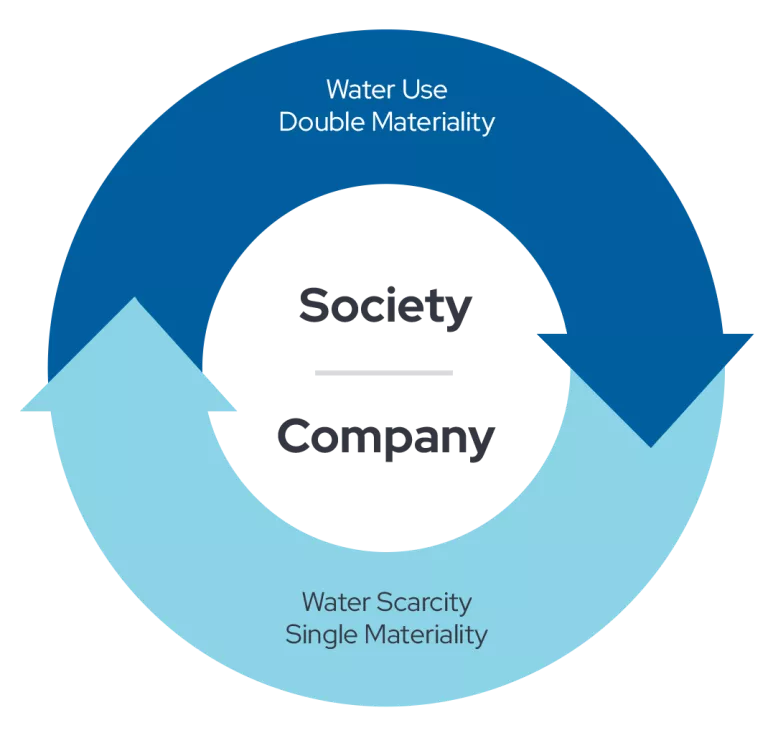In practice, ESG integration means incorporating material information into the investment process. Different asset managers may consider different information, often dependent on the asset class or their investment approach. Because ESG information is not yet standardized, and often lacking consistency and clarity, it’s ultimately up to each asset manager to apply the information in a decision-useful way. As is the case with any investment philosophy, some managers will be successful in their approach and others will not.
This amorphous term ESG encompasses a wide spectrum of information and considerations but is so often assumed to mean something it does not. To paint a better picture of what the term ESG actually means, each month we will be outlining examples of what ESG integration looks like in practice across a variety of sectors, through the lenses of risk, opportunity, and impact.
This month
- Sector: Information Technology
- Industry: Technology Hardware & Semiconductors
- ESG Issue: Water Use in the Supply Chain
Risk: Scarce resources and clean-up costs
Water is a necessary resource in the product manufacturing process for tech hardware and semiconductors. High volumes of pure water are used to wash a device across its various stages of assembly.
Operational risks from water use. A company that’s manufacturing facilities are located in water-stressed areas like the western U.S. is exposed to operational risk. Water use restrictions may cause operational delays, while a higher cost of water due to its scarcity will affect operating costs, reducing operating margins. Operational delays will reduce productivity, efficiency, and output, causing units of production lost to rise, affecting future revenue generation and future cash flows.
Regulatory risks from water use. The manufacturing of semiconductors generates wastewater that contains heavy metals and toxic solvents. Due to the hazardous nature of these liquids, semiconductor companies historically have incurred clean-up costs related to groundwater contamination of up to $100 million1. Some companies are proactively addressing this by reducing their reliance on chemicals and proactively improving the treatment of water before discharge.
Did you know?
Intel, the largest semiconductor chip manufacturer by revenue, used 16 billion gallons of water in 20211.Producing a single 8-inch wafer, which serves as the foundation for approximately 800 chips, requires an estimated 7,500 liters of water.
Opportunity: Proprietary rights
To improve performance and avoid delays, a company may choose to invest in water efficiency technology or engineering solutions. While innovative technologies often have high upfront costs, some companies see the opportunity that these solutions present. Those that are willing to make those initial investments may benefit from proprietary rights as others in the industry adopt and license their solutions. Gradient, a private cleantech developer and water solutions provider, recognizes the material risk posed by water scarcity to semiconductor manufacturing. As a leading innovator in wastewater technology, they raised over $100 million in their series C funding in 2021 and earned over $20 million in new contracts in Q4 2022.
Impact: Water reliance
While there are many factors that contribute to increasing water stress and scarcity around the world, semiconductor manufacturers that fail to make reductions to their water use and efficiency, thus continuing to require high volumes of water for their operations, will become one of those contributing factors.
Did you know?
According to the UN, during at least one month out of the year, two-thirds of the global population today will experience severe water scarcity. This number is projected to continue to grow, as evidenced by the severity and length of droughts every year around the world.2
The more water that’s used, the greater the likelihood that water will become scarce in areas where they operate, further exposing them to the operational risks posed by water access. As water becomes scarcer, companies most reliant on high volumes will experience more operational delays. And as the price of water increases due to scarcity in the area, the company’s bottom line will suffer.
Companies that ignore the environmental impact of their business and fail to make water reduction a priority in their operations, will contribute the most to increasing water scarcity where they operate, which will simultaneously increase the risks that water scarcity poses to their own business operations.

Questions an analyst might ask
• What water management and efficiency processes do you have in place in your manufacturing and production processes?
• What technology or equipment have you installed to reduce water use and increase water efficiency in production processes?
• How much have you invested in water efficiency technology and how much do you project to save in estimated forecasts with this technology in your production processes?
• Have you identified which manufacturing plants are located in water scarce regions? And have you quantified the impact to operations from water scarcity?
The bottom line
In valuing a company, an analyst may raise risk premia and cost of capital if the manufacturing facilities are located in water-stressed areas. They may even have to adjust their valuation from plant site to plant site.
On the other hand, if that company is making investments in water efficiency or treatment solutions, an analyst may lower risk premia and cost of capital. The upfront costs associated with those mitigation solutions can be justified in the short term because of benefits to long term cash flows from increased efficiency, decreased operational risks and fines, and revenue expansion from proprietary innovations.
Learn more
To learn more about supporting your clients with sustainable investing solutions, reach out to our team at sustainable@envestnet.com or visit envestnet.com/sustainable/.

